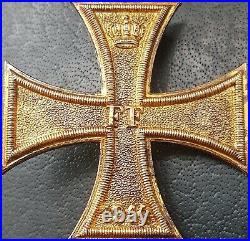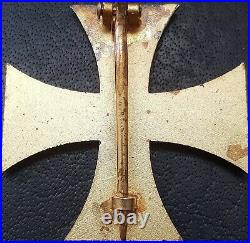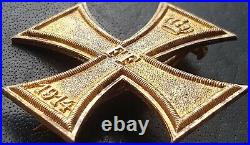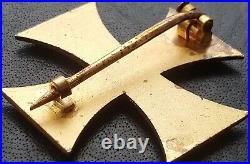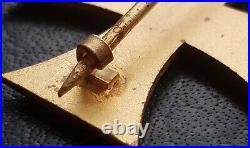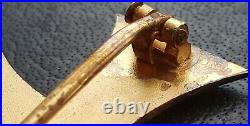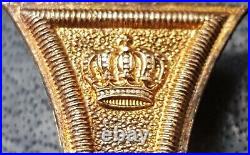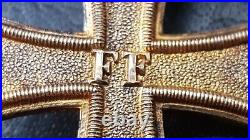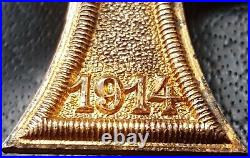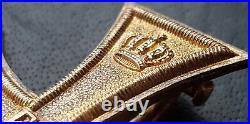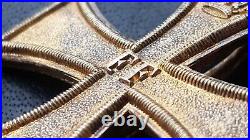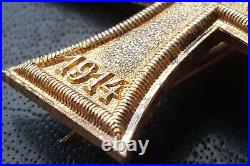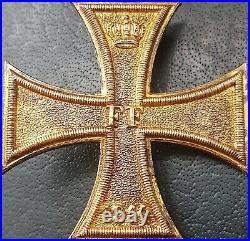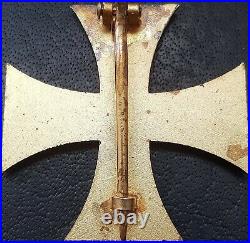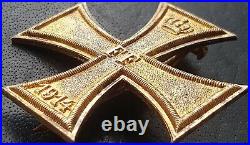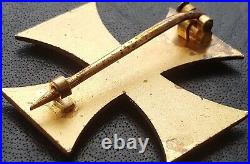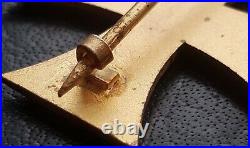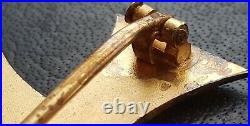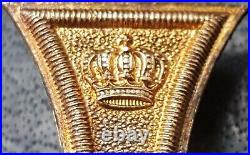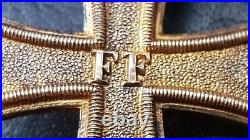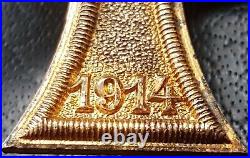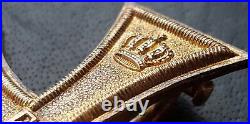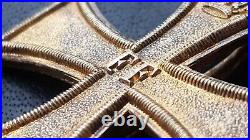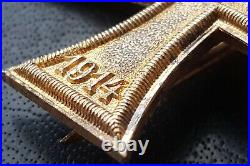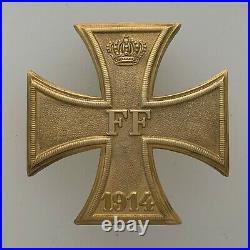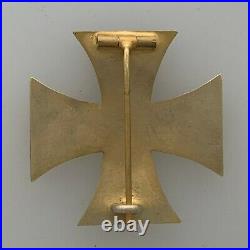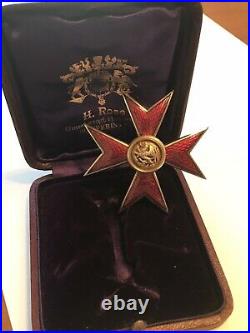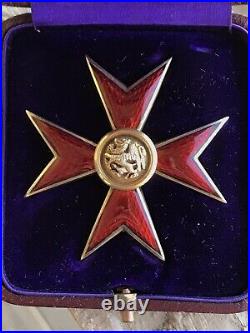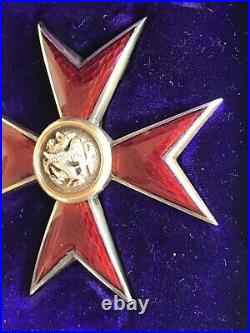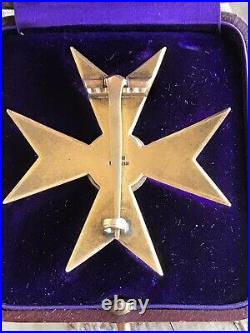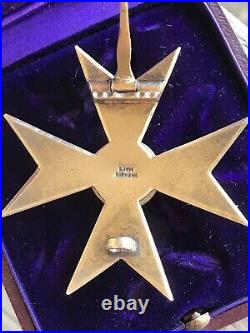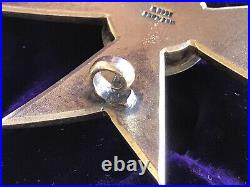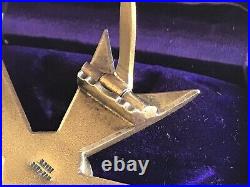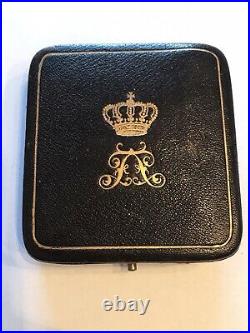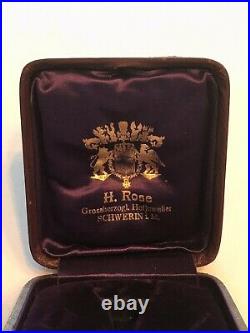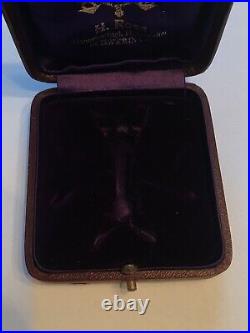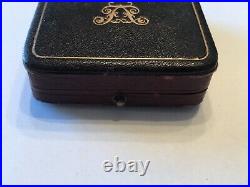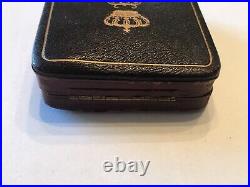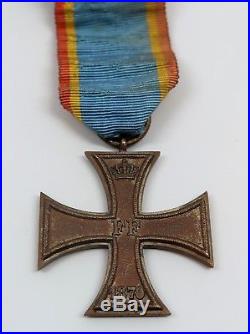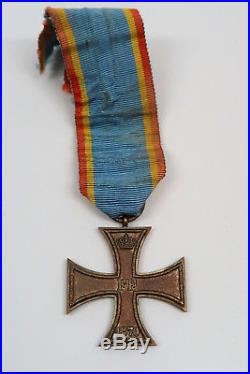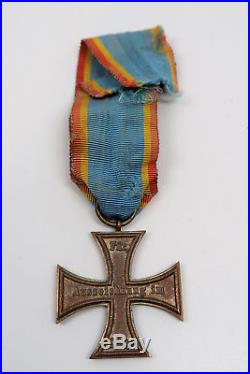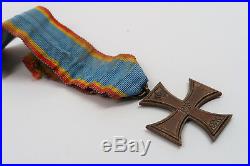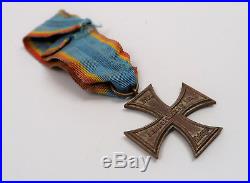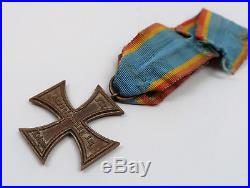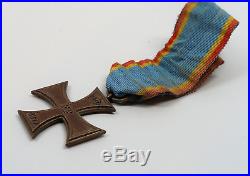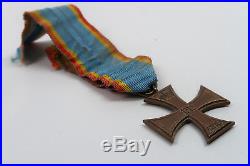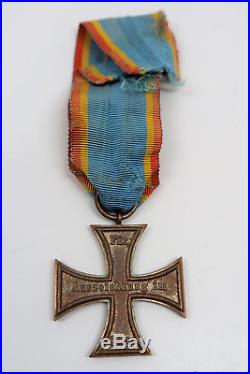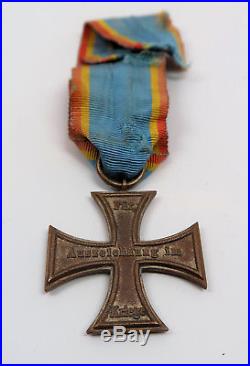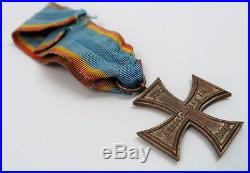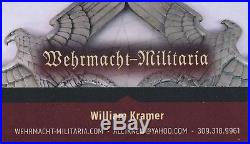Original German post WW2 made WW1 Mecklenburg Military Merit Cross First Class (Militärverdienstkreuz) , IN VERY NICE CONDITION – POST WW2 MADE EXAMPLE / MAKER: ST&L (STEINHAUER UND LUECK) – GOOD EARLY EXAMPLE WITH SOLID HINGE BLOCK, PERFECTLY WORKING PIN DEVICE, HARD TO FIND – REALLY GOOD AND RARE PIECE. FEW FACTS ABOUT POST WW2 MADE IMPERIAL GERMAN & FOREIGN AWARDS. After WW2 wear and display of former Nazi decorations were strictly prohibited in Germany. As Germany split apart into East and West Germany, each of these new countries issued directives concerning the status of former awards and decorations of Nazi Germany. Within East Germany, these awards were all abolished with a new era of German Communist decorations created to take their place. However, in West Germany, pre 1933 issued awards were fully accepted to wear & display, therefore these awards (including foreign awards) were continuously produced after the end of the war by major manufacturers, such as Steinhauer & Lück, Deumer or Souval. In 1957 the West German government authorised replacement Iron Crosses with an Oak Leaf Cluster in place of the swastika, similar to the Iron Crosses of 1813, 1870, and 1914, which could be worn by World War II Iron Cross recipients. The 1957 law also authorised de-Nazified versions of most other World War II-era decorations (except those specifically associated with Nazi Party organizations, such as SS Long Service medals, or with the expansion of the German Reich, such as the medals for the annexation of Austria, the Sudetenland, and the Memel region). HISTORY OF THE AWARD. Mecklenburg Military Merit Cross (Militärverdienstkreuz) was established by Friedrich Franz II, Grand Duke of Mecklenburg-Schwerin on August 5, 1848. Mecklenburg-Schwerin, a grand duchy located in northern Germany, was a member of the German Confederation and later the German Empire. In several respects, Mecklenburg-Schwerin’s Military Merit Cross was patterned after the Prussian Iron Cross. Both came in two classes, a pinback 1st Class and a 2nd Class worn from a ribbon, both were awarded without regard to rank (most other orders and medals of both states were awarded in different classes based on the rank or status of the recipient), and both were awarded for specific campaigns, as indicated by a date on the bottom arm of the cross. However, there were more versions of the Mecklenburg cross than of the Prussian cross (which was only awarded by Prussia in the Napoleonic Wars, the Franco-Prussian War and World War I, and by Germany in World War II). The first versions were dated 1848 and 1849, and awarded for merit in the First War of Schleswig and in the suppression of the German Revolution of 1848-49 (some Mecklenburg troops were sent to Baden in 1849 while others remained in the fighting in Schleswig). In 1859, some Mecklenburg observers and Austrian officers were decorated for merit during the Second Italian War of Independence. The next version was dated 1864, and recognized merit in the Second War of Schleswig, also called the German-Danish War. Mecklenburg-Schwerin’s participation on the side of Prussia and other north German states in the Austro-Prussian War led to the next version, dated 1866. An 1870 version was created for the Franco-Prussian War, where Mecklenburg troops fought as part of the 17. In this war, a number of officers and soldiers received both the Iron Cross and the Mecklenburg-Schwerin Military Merit Cross. The next version was dated 1877. Certain German states, especially Mecklenburg-Schwerin, were sympathetic to the Russian and Romanian cause, and had dynastic connections to both states. Grand Duke Friedrich Franz II’s grandmother was Grand Duchess Elena Pavlovna of Russia, his daughter was married to Tsar Alexander II of Russia’s son, and his son and heir, Friedrich Franz III, would marry Grand Duchess Anastasia Mikhailovna of Russia in 1879. The Romanian royal family was a branch of the Hohenzollerns, the ruling house of Prussia and the newly created German Empire. A version dated 1900 was struck for Mecklenburgers who had distinguished themselves in the Boxer Rebellion of 1900-01. An undated version was then created, which was awarded for merit in various colonial conflicts of the first decade of the 20th century, including the Herero Wars (a series of brutal conflicts where some Germans displayed great bravery in fighting guerrillas from the Herero and other tribes, while other Germans perpetrated what has come to be seen as the genocide of the Herero people). Germany entered World War I in the first days of August 1914. On February 28, 1915, Friedrich Franz IV, Grand Duke of Mecklenburg-Schwerin, reauthorized the Military Merit Cross. The new version was dated 1914 and awards were made retroactively to the beginning of the war. Both classes of the Military Merit Cross continued to be awarded throughout the war, both to Mecklenburgers and to soldiers of other German states and German allies. Upon Friedrich Franz IV’s abdication in November 14, 1918, the Military Merit Cross became obsolete. It continued to be permitted for wear by those who had received it through the Weimar era, the Third Reich and in West Germany (it is unclear whether East Germany permitted the wear of any Imperial German decorations). In all its versions, the Mecklenburg-Schwerin Military Merit Cross was a bronze gilt cross pattée ins design, similar to the Iron Cross but with slightly narrower arms. The obverse bore a crown on the upper arm, the initials of Friedrich Franz in the center, and the date (except for the colonial version) at the bottom of the lower arm. The reverse of the 2nd Class bore the legend “Für Auszeichnung im Kriege” (“For distinction in the war”). The reverse of the 1st Class, a pinback cross (Steckkreuz), was blank. The ribbon was light blue with narrow edge stripes of yellow and red (with the red stripes on the outside). For awards to non-combatants, the same cross was worn, but the ribbon was changed to red with light blue and yellow edge stripes. This item is in the category “Collectables\Militaria\World War II (1939-1945)\Medals/ Ribbons”. The seller is “a..anderson” and is located in this country: GB. This item can be shipped worldwide.
- Country/Region of Manufacture: Germany
- Country/ Organization: Germany
- Issued/ Not-Issued: Issued
- Theme: Militaria
- Type: Medals & Ribbons
- Conflict: World War I (1914-1918)
- Service: Navy
- Era: 1914-1945




